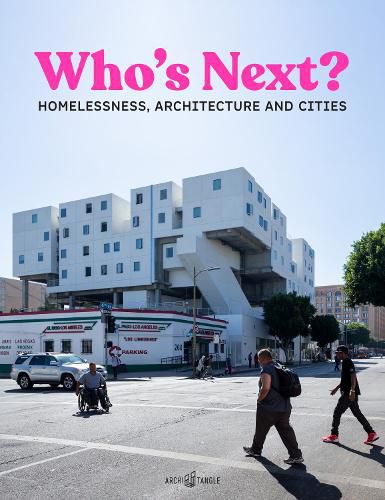Readings Newsletter
Become a Readings Member to make your shopping experience even easier.
Sign in or sign up for free!
You’re not far away from qualifying for FREE standard shipping within Australia
You’ve qualified for FREE standard shipping within Australia
The cart is loading…






Homelessness is a growing global problem that requires local discussions and solutions. In the face of the coronavirus pandemic, it has noticeably become a collective concern. However, in recent years, the official political discourse in many countries around the world implies that poverty is a personal fault, and that if people experience homelessness, it is because they have not tried hard enough to secure shelter and livelihood.
Although architecture alone cannot solve the problem of homelessness, the question arises: What and which roles can it play? Or, to be more precise, how can architecture collaborate with other disciplines in developing ways to permanently house those who do not have a home?
Who’s Next? Homelessness, Architecture, and Cities seeks to explore and understand a reality that involves the expertise of national, regional, and city agencies, non-governmental organizations, health-care fields, and academic disciplines.
Through scholarly essays, interviews, analyses of architectural case studies, and research on the historical and current situation in Los Angeles, Moscow, Mumbai, New York, Sao Paulo, San Francisco, Shanghai, and Tokyo, this book unfolds different entry points toward understanding homelessness and some of the many related problems.
The book is a polyphonic attempt to break down this topic into as many parts as needed, so that the specificities and complexities of one of the most urgent crises of our time rise to the fore.
$9.00 standard shipping within Australia
FREE standard shipping within Australia for orders over $100.00
Express & International shipping calculated at checkout
Homelessness is a growing global problem that requires local discussions and solutions. In the face of the coronavirus pandemic, it has noticeably become a collective concern. However, in recent years, the official political discourse in many countries around the world implies that poverty is a personal fault, and that if people experience homelessness, it is because they have not tried hard enough to secure shelter and livelihood.
Although architecture alone cannot solve the problem of homelessness, the question arises: What and which roles can it play? Or, to be more precise, how can architecture collaborate with other disciplines in developing ways to permanently house those who do not have a home?
Who’s Next? Homelessness, Architecture, and Cities seeks to explore and understand a reality that involves the expertise of national, regional, and city agencies, non-governmental organizations, health-care fields, and academic disciplines.
Through scholarly essays, interviews, analyses of architectural case studies, and research on the historical and current situation in Los Angeles, Moscow, Mumbai, New York, Sao Paulo, San Francisco, Shanghai, and Tokyo, this book unfolds different entry points toward understanding homelessness and some of the many related problems.
The book is a polyphonic attempt to break down this topic into as many parts as needed, so that the specificities and complexities of one of the most urgent crises of our time rise to the fore.